[AGE6 00] MIDTERM: Lesson 5 Prehistoric and Ancient Arts
1/68
There's no tags or description
Looks like no tags are added yet.
Name | Mastery | Learn | Test | Matching | Spaced |
|---|
No study sessions yet.
69 Terms
Stone Age Arts
Known also as ___, ‘parietal art’, Cave Art is a general term used to describe any kind of man-made image on the walls, ceiling or floor of a cave or rock shelter.
Most cave art is found in shallow rock shelters, such as those formed by overhanging rocks, but some was created in total darkness within deep, uninhabited caves, and was rarely seen by humans.
Cave Art
It is a general term used to describe any kind of man-made image on the walls, ceiling or floor of a cave or rock shelter.
Most ___ is found in shallow rock shelters, such as those formed by overhanging rocks, but some was created in total darkness within deep, uninhabited caves, and was rarely seen by humans.
6 notable Oldest cave art evidences
Bhimbetka Petroglyphs'
Venus of Berekhat Ram
Abstract Drawing
Hall of Bulls Cave Paintings
Amur River Basin Pottery
Tuc d'Audoubert Bison Sculpture
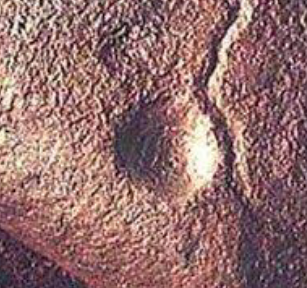
Bhimbetka Petroglyphs
(290,000- 700,000 BCE) Cupules at Auditorium Cave & Daraki-Chattan Rock Shelter, India.
The oldest known rock art in the world.

Venus of Berekhat Ram
(230-700,000 BCE), Israel.
At first, historians believed that the artifact was a product of natural erosion rather than a deliberate human act of creativity until the discovery of a second one, the Venus of Tan-Tan, in Morocco.
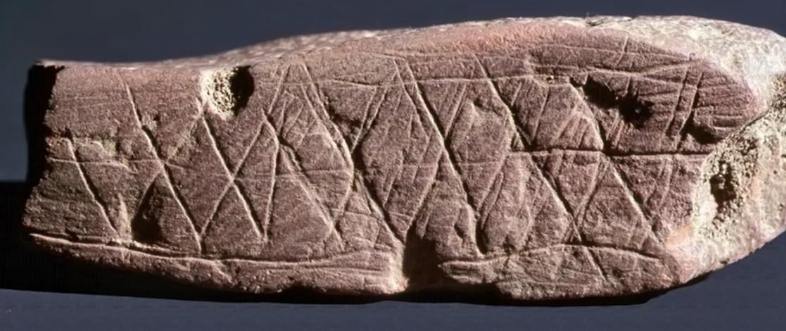
Abstract Drawing
From the 73,000 BCE at Blombos Cave, South Africa

Hall of Bulls Cave Paintings
28,000 and 10,000 BСЕ, France.
The paintings on cave walls represent the earliest surviving examples of the artistic expression of early people.
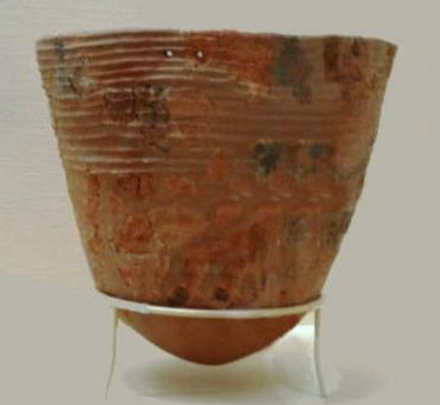
Amur River Basin Pottery
14,300 BСE
Chinese ceramics from Late Paleolithic Culture.

Tuc d'Audoubert Bison Sculpture
In France 13,500 BCE
Sculpted in soft clay.
The relief carries marks left by artist's fingers and nails.
Egyptian Art
It includes the painting, sculpture, architecture, and other arts produced by the civilization in the lower Nile Valley from 5000 BCE to 300 CE.
All ___ is based on perfect balance because it reflects the ideal world of the gods.
It reached considerable sophistication in painting and sculpture, and was both highly stylized and symbolic.
Egyptian Art Characteristics
Daily life activities.
Journey of the deceased into the afterworld.
Images of the gods and deities.
Honoring pharaohs, noble people and the dead.
Social and political rank.
Writings on the wall describing drawings and images.
Worship and rituals.
Egyptian Art Forms: Amarna style
Revolutionary style Egyptian art created by Amenhotep IV, who took the name Akhenaton during his reign (1353-36 BCE) in the 18th dynasty.
His innovations were centered upon a new religion based on the worship of Aton, or the sun’s disk, which Akhenaton elevated above all others in the Egyptian pantheon.
Wall Painting
Sculpture
Egyptian Funerary, Deity and Ritualistic
Architecture
Writings
Carving, Relief and Jewelry
Egyptian Wall Paintings
These are characterized by regularity and detailed depiction of gods, human beings, heroic battles, and nature.
A high proportion of the surviving works were designed and made to provide peace and assistance to the deceased in the afterlife.
Ramesses the Great and Battle of Dapur
Egyptian Mummification Wall Paintings
Book of the Dead Wall Paintings
Funeral Wall Paintings
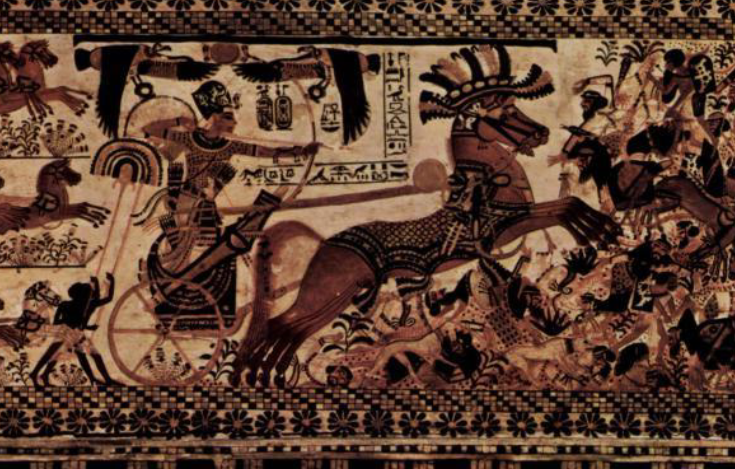
Ramesses the Great and Battle of Dapur
Egyptian Wall Paintings
Painting depicting his achievement in his raid against Muwatalli’s Hittite resurgent forces.
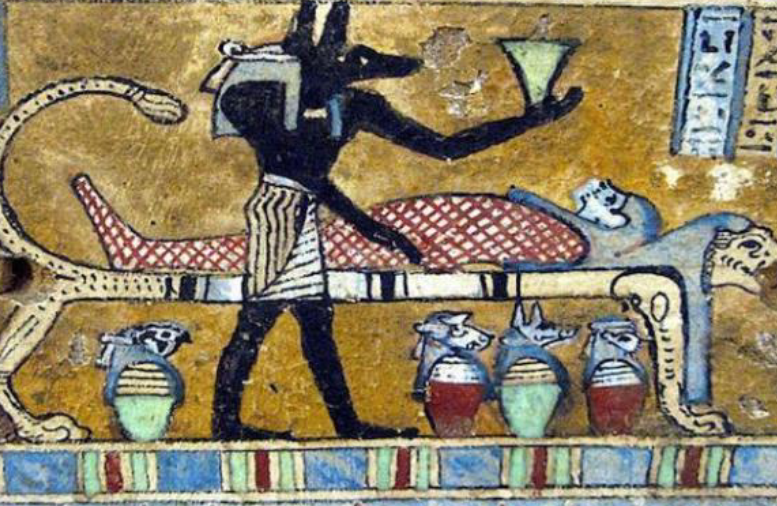
Egyptian Mummification Wall Paintings
Egyptian Wall Paintings
Mummifying the dead is also a sacred ritual in preparation for the afterlife.
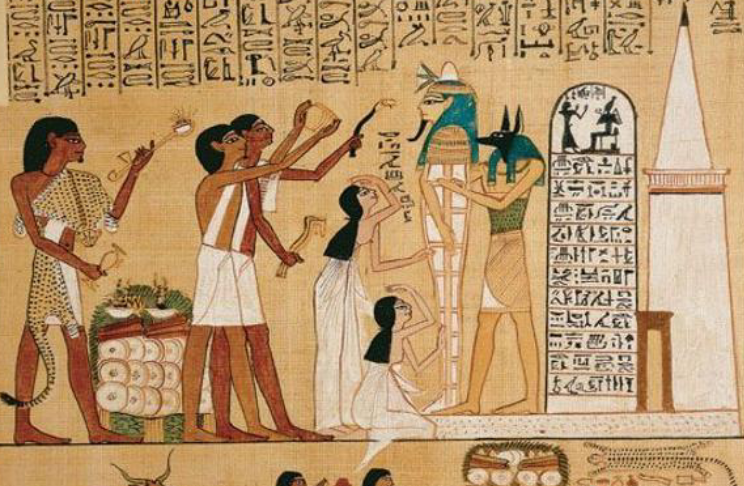
Book of the Dead Wall Paintings
Egyptian Wall Paintings
Containing spells to help the dead back to life after the journey to the underworld.

Funeral Wall Paintings
Egyptian Wall Paintings
Aside from honoring the dead, the painting should contain the ritual of the dead’s human heart in the ‘weighing scale’.
Egyptian Sculptures
Characterize with idealized two-dimensional pieces and statuary, symmetry, size hierarchy, anonymity, and symbolism.
Egyptians focused on preservation because they believed in the afterlife, so “most art was created not for public viewing but functioned to protect and provide for the spirit of the deceased.
Statuaries were not only images of the pharaoh and his family, but also of people, animals and slaves that surrounded him during his life.
The ones we see today look like they are carved from stone or made from clay and are colorless.
Nefertiti Bust
Colossi of Memnon (18 m)
Seated Statues of Rahotep and Nofret

Nefertiti Bust
Egyptian Sculptures
Bust sculpture
Coated limestone produced by Thutmose in 1345 BC.
Depiction of the Great Royal Wife of the Egyptian Pharaoh Akhenaten.
This is regarded as one of the most copied works on ancient Egypt.
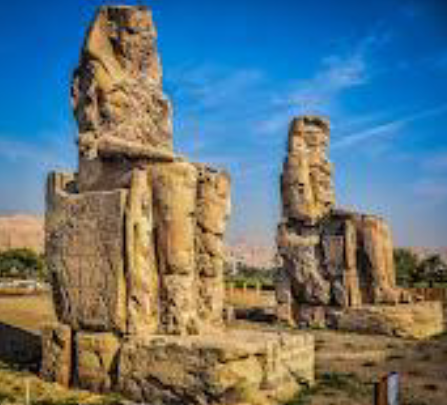
Colossi of Memnon (18 m)
Egyptian Sculptures
Two massive huge stone statues representing greatness of Pharaoh Amenhotep III and it meant to protect the temple from evil spirits.

Seated Statues of Rahotep and Nofret
Egyptian Sculptures
From the 4th dynasty (2613 to 2494 BC) the statues were skillfully sculpted confirming their high rank stature.
With glass inlaid eyes makes the statue more realistic.
Egyptian Funerary, Deity and Ritualistic Art
Depicted the performance of burial rites and rituals, symbolizing the transition from earthly existence to the realm of the gods.
Moreover, these artworks created an environment within the tomb that was believed to facilitate the rebirth and rejuvenation of the deceased in the afterlife.
Wrapped Osiris (mummified) Statue
Tutankhamun’s ‘Golden Death Mask
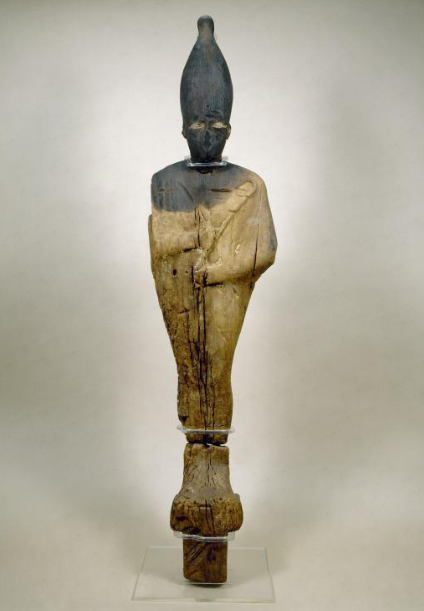
Wrapped Osiris (mummified) Statue
Statues like this were buried in tombs, wrapped in cloth.
It was thought the statues helped the dead be reborn in the next life, like the real deity Osiris.
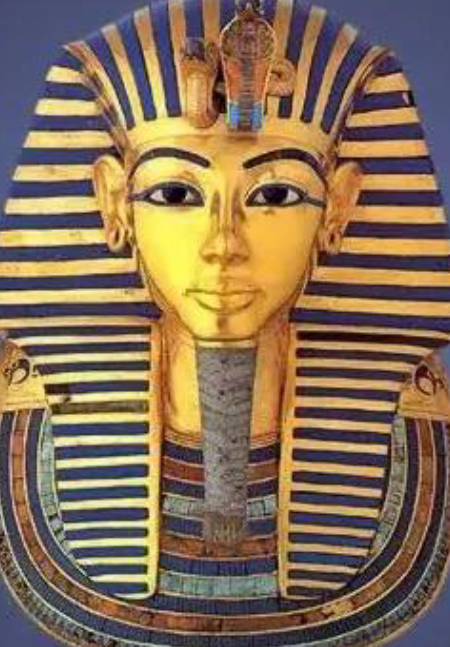
Tutankhamun’s ‘Golden Death Mask
Discovered by Howard Carter.
It is an ancient death mask dated 1323 BC and is regarded as one of the most famous Egyptian artworks and admired works of art around the world.
Egyptians tombs
Much of the Ancient Egyptians artworks created had something to do with their religion and ritualistic practices.
They would fill the tombs of the Pharaohs with paintings and sculptures.
Much of this artwork was there to help the Pharaohs in the afterlife.
The temples often held large statues of their gods as well as many paintings on the walls.
All tombs had two essential architectural components that reflected their religious function
A burial chamber and
A nearby mortuary chapel
The burial chamber was below ground and housed and protected the body and spirit.
The mortuary chapel was above ground and was accessible to visitors who would perform rites and make offerings of food and drink for the dead person.
Differences can be seen in the size, design and complexity of tombs – with different types such as pyramids, mastabas and rock-cut chambers.
burial chamber
The ___ was below ground and housed and protected the body and spirit.
mortuary chapel
The ___ was above ground and was accessible to visitors who would perform rites and make offerings of food and drink for the dead person.

The Valley of the Egyptian Kings and Queens
During Egypt's New Kingdom (1539-1075 B.C.), before the pyramids, the
valley became a royal burial ground for pharaohs such as Tutankhamun, Seti
I, and Ramses II, as well as queens, high priests, and other elites of the
18th, 19th, and 20th dynasties.
False doors
___ were also placed in these closed chapels and tombs to establish a connection between the worlds of the living and the dead.
The design on the door allowed the spirit of the person to move freely between the chapel and the tomb to receive offerings.
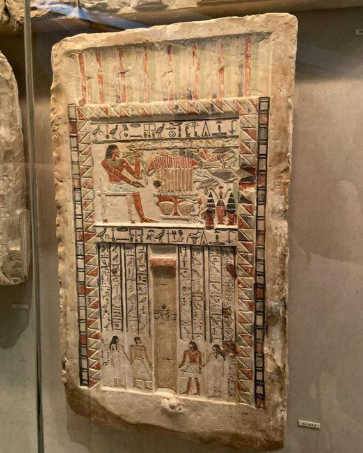
Royal Sealer Neferiu
False Door of the ___, Middle Kingdom, 8th to 11th Dynasty.
Anthropoid coffin and Sarcophagus
Two Types of Egyptian Caskets
Anthropoid coffin
The ____ itself is typical of the ancient Egyptian burial practices.
The coffin echoes the shape of the mummified body.
Decorated with an idealized representation of the owner's face and with images of gods, goddesses, animals and objects, as well as hieroglyphic writings, so that gods would identify and help him to the afterlife.
Sarcophagus
These were rectangular boxes with flat lids.
They were painted and inscribed in hieroglyphs with four important features: the deceased's name and titles; a list of food offerings; a false door through which the ‘ka’ could pass; and eyes through which the deceased could see outside the coffin.
Ka, Ba, and Akh
The 3 Egyptian Concept of the Soul
Akh
It is the spirit of Ra, which encapsulates the concept of light - the transfigured spirit of a person that becomes one with light after death.
The opposite of ___ is Mut (dead), the state of a person who has died but has not been transfigured into light.
Ba
It s represented as a human-headed bird that leaves the body when a person dies.
The face of ___ was the exact likeness of that of the deceased person
Ka
It is the life force or spiritual double of the person.
The royal ____ symbolized a pharaoh's right to rule, a universal force that passed from one pharaoh to the next.
Egyptian Pantheon
Isis
Osiris
Ra or Re
Horus
Amun-Ra
Isis
Egyptian Pantheon
It is one of the most important goddesses of ancient Egypt.
She was a great magician, whose power transcended that of all other deities
Osiris
Egyptian Pantheon
The King of the Living
Considered the oldest child of the earth god Zeb and the sky goddess Nut and the god of the afterlife.
Ra or Re
Egyptian Pantheon
It is also spelled Ra or Pra, in ancient Egyptian religion, ‘god of the sun and radiance’, the creator god.
Horus
Egyptian Pantheon
God of Vengeance
holding a special position in ancient Egypt and worshiped as the god of sky, war, protection, and light.
Amun-Ra
Egyptian Pantheon
It translated to "the hidden one", is the god of the air, the sun, and creation.
He was seen as the god of obscurity or the mysteriousness of life
Egyptian Architecture
Developed roughly 3000 years ago and characterized by post and lintel construction, massive walls covered with hieroglyphic and pictorial carving, flat roofs, and structures except for the Pyramids.
Most houses were built of clay or baked bricks.
The Great Pyramids of Giza
The Great Pyramids of Giza
Located on the Giza plateau near the modern city of Cairo, the pyramids was built during the reign of the king Khufu (2600BC) of the 4th Dynasty in the span of over a 20-years.
Khufu's vizier, Hemiunu the Pharaos physician was also the architect of his Pyramid.
King Khufu
The oldest pyramid in the middle is for ___, ‘Cheops’ in Greek, the second king of the 4th dynasty.
King Khafre
The second tallest was built for ___, ‘Chephren’ in Greek was the fourth king in the same dynasty.
King Menkaure
The last pyramid to be built was that of ___, ‘Mykerinus’ in Greek was the fifth king of the same dynasty.
Egyptian Columns
___ from ancient Egypt was inspired by distinct ideas form earliest builders carved ___ from enormous blocks of limestone, sandstone, and red granite.
Later on, ___ and capitals were constructed from stacks of stone disks.
Some Egyptian ___ have polygon-shaped shafts with as many as 16 sides while common ___ are circular.
Architect Imhotep
One of the great ancient Egyptian ___, who lived over 4,000 years ago in 27th century B.C., is credited with carving stone columns and capitals to resemble bundled reeds and other plant forms.
The columns were placed close together so they could carry the weight of the heavy stone roof beams.
Common features of Egyptian columns includes:
Stone shafts carved to resemble tree trunks or bundled reeds or plant stems, sometimes called papyrus columns;
Lily, lotus, palm or papyrus plant motifs on the capitals (tops);
Bud-shaped or campaniform ‘bell-shaped’ capitals; and
Brightly painted carved relief decorations.
mastabas
The first royal tombs before the pyramids were called ___.
Inside were rooms containing jars, small objects, and offerings of food and drink.
The tombs were surrounded by a large number of graves of women and men believed to be servants of the kings who were sacrificed to serve pharaohs in their afterlife.
Temple of the Ramesseum
One of the most significant architecture not only to Egyptians but to Western civilization as well is the ___, 1250 B.C.
The mighty columns and colonnade are a remarkable feat of engineering before the Greek conquest of Alexander the Great.
Egyptian Writings
Egyptian hieroglyphs were the formal writing system used in Ancient Egypt for writing the Egyptian language.
Hieroglyphs combined logographic, syllabic and alphabetic elements, with more than 100 distinct characters.
Characters objects are portrayed as ideograms or pictures, and the picture signs have the phonetic, or sound, value of the words represented by the objects.
There are three forms of Hieroglyphic script namely:
Hieratic – used for writing administrative documents, accounts, legal texts, and letters, as well as mathematical, medical, literary, and religious texts.
Demotic - primarily for administrative documents, letters, and tax records.
Coptic - used for literary and common writing.
Rosetta Stone
Hieratic
Forms of Hieroglyphs
Used for writing administrative documents, accounts, legal texts, and letters, as well as mathematical, medical, literary, and religious texts.
Demotic
Forms of Hieroglyphs
Primarily for administrative documents, letters, and tax records
Coptic
Forms of Hieroglyphs
Used for literary and common writing.
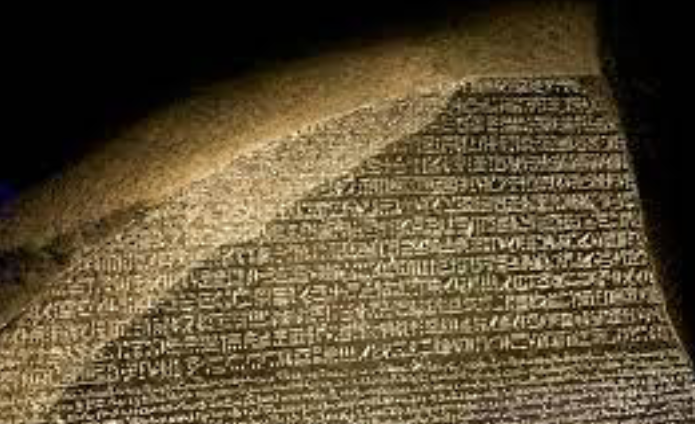
Rosetta Stone
Egyptian Writing
A granodiorite stele discovered in 1799.
The ___ is inscribed with the three versions of texts.
The top is in the hieratic script, middle in the demotic script while the bottom in the ancient coptic Greek.
The discovery of the stone holds the major key to understanding Egyptian hieroglyphs by the language and writing experts.
hieratic; demotic; coptic
Rosetta Stone
The top is in the ___ script, middle in the ___ script while the bottom in the ancient ___ Greek.
Egyptian Jewelry
Egyptians wore necklaces, bracelets, heavy neck collars, pendants, earrings, rings, and special buttons on their clothing.
Wealthy Egyptians had jewelry made out of precious jewels and gold.
The common people couldn't afford these luxuries, so they wore jewelry made out of colored beads.
Tutankhamun’s lunar pectoral
Sesostris III Pectora
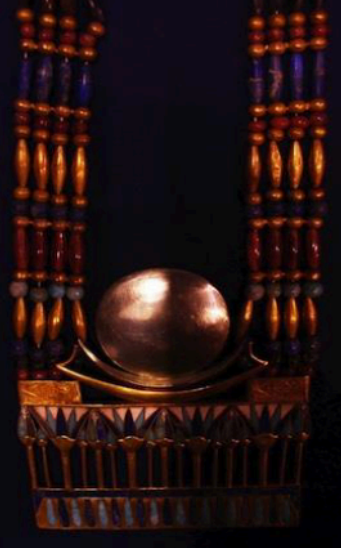
Tutankhamun’s lunar pectoral
Egyptian Jewelry
Metal casted, carved jewelry work was quite sophisticated even in the Old Kingdom, as demonstrated by some highly creative pieces depicted specially in tomb scenes.

Sesostris III Pectoral
Egyptian Jewelry
Gold pectoral with semiprecious stones, Middle Kingdom, 12th dynasty (1991–1786 BCE).
Nabataean Architecture
City of Cliffs
Nabataean is a member of an ancient Arabian people who from 312 BC formed an independent kingdom with its capital at Petra in Jordan.
The art of the Nabataeans of North Arabia were known for potted painted ceramics, and dispersed among Greco-Roman world, as well as sculpture and architecture.
Nabataean Art is most well known significantly for the archaeological sites in Petra, Jordan.
This 21st century engineering during the ancient period of Al Kazneh in Petra was built possibly as early as fifth century BCE by the Nabataeans and was discovered in 1812 by a Swiss explorer Johann Ludwig Burckhardt.
It was built as a mausoleum and crypt at the beginning of the 1st century AD during the reign of Aretas IV Philopatris.
‘Later in 2007 it was included in the list of the “New Wonders of the World”.
Nabataean structures especially tombs are primarily "Rock-Cut tombs."
They are created from cutting directly into the landscape, traditionally rock formation.
Rock-cut tombs are the most frequently found within excavated Nabataean archeological sites.
There have been nearly 900 rock-cut tombs found in Petra and Hegra.
Another most prominent rock-cut facades within the Petra Archaeological Park is the Palace Tomb synthetized with the advanced set of skills and techniques that the Nabataeans deployed to shape the unique monuments which was possibly built between the 1st and the 2nd century AD.
Nabataean
City of Cliffs
___ is a member of an ancient Arabian people who from 312 BC formed an independent kingdom with its capital at Petra in Jordan.
The art of the ___ of North Arabia were known for potted painted ceramics, and dispersed among Greco-Roman world, as well as sculpture and architecture.
___ Art is most well known significantly for the archaeological sites in Petra, Jordan.
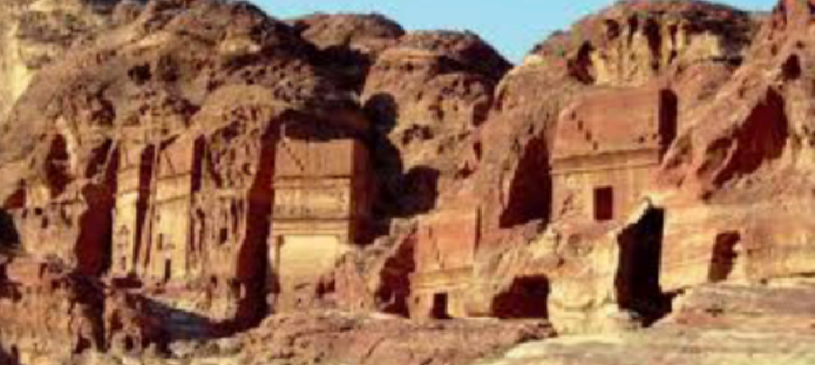
Ancient Cliff settlements in Petra, Jordan

Al Kazneh
The Treasury
Petra's most famous icon, the ___ ('The Treasury') tomb facade
This 21st century engineering during the ancient period of ___ in Petra was built possibly as early as fifth century BCE by the Nabataeans and was discovered in 1812 by a Swiss explorer Johann Ludwig Burckhardt.
It was built as a mausoleum and crypt at the beginning of the 1st century AD during the reign of Aretas IV Philopatris.
Later in 2007 it was included in the list of the “New Wonders of the World”.
Rock-Cut tombs
Nabataean structures especially tombs are primarily "___."
They are created from cutting directly into the landscape, traditionally rock formation.
___ are the most frequently found within excavated Nabataean archeological sites.
There have been nearly 900 ___ found in Petra and Hegra.
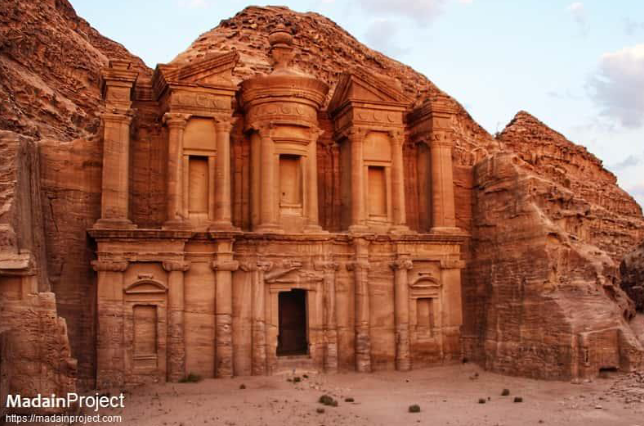
Ad-Deir Temple
___ may have had a religious function for the Nabateans after an inscription found near the monument suggests that it was used for religious assemblies in memory of King Obodas III who the Nabateans deified (worshiped as god) after his death.
The inscription reads: “Let be remembered ‘Ubaydu’ son of Waqihel and his associates of the symposium of Obodas the God”

Palace Tomb
Another most prominent rock-cut facades within the Petra Archaeological Park is the Palace Tomb synthetized with the advanced set of skills and techniques that the Nabataeans deployed to shape the unique monuments which was possibly built between the 1st and the 2nd century AD.
5000
Ancient Egyptian art has survived for over ___ years and continues to fascinate people from all over the world.
Its ancient premise has become a modern reality.
Its art became a path to world eternal emulation and remembrance.